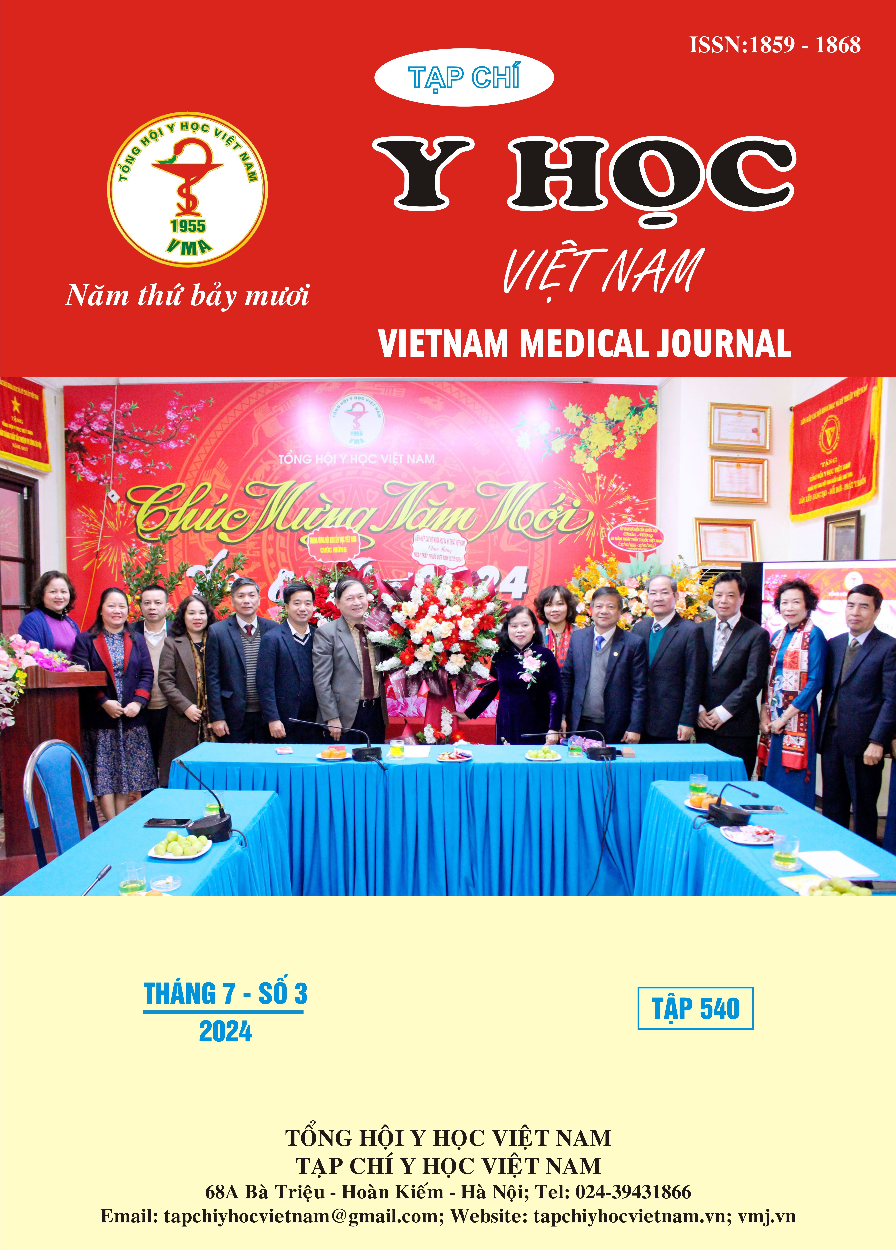EVALUATE OF PATIENT SATISFACTION WITH MEDLO AND SENSIVE SERUM TREATMENT FOR FACIAL CORTICOID-ADDICTIVE DERMATITIS (FCAD) FROM 2022 TO 2024
Main Article Content
Abstract
Background: “Facial corticosteroid-addictive dermatitis (FCAD)” appeared in 2006, referring to chronic inflammatory lesions on the facial skin caused by long-term use of corticosteroid-containing preparations. It has diverse clinical symptoms and is a relatively difficult disease to treat completely. Medlo and Sensive serum meet the treatment requirements, but have never been studied in combination to treat FCAD before. Objectives: Describe clinical characteristics and anxiety levels in patients with corticosteroid-dependent dermatitis (FCAD) coming for examination in 2022 - 2024. Evaluating the results of topical treatment with Sensive serum combined with Medlo and the level of satisfaction in patients with corticosteroid-dependent dermatitis (FCAD) in 2022 – 2024. Materials and methods: The patient was diagnosed with corticosteroid addictive dermatitis of the face at the FOB Cosmetic Skin Research Institute. Cross-sectional descriptive study. Results: The majority of patients are female (96,7%), aged >30% (78,3%), and mainly housewives (35%); FCAD patients had anxiety symptoms before treatment, accounting for 58,3%; Actually, Anxiety accounts for 21,7% and after treatment, the anxiety rate is 0% and only 5% have anxiety symptoms. The majority of patients had moderate severity (70%), severe severity 17%, and mild severity 13%. There is a difference in treatment results between the number of times Medlo is applied and Sensive serum is applied; There is a relationship between applying Medlo and applying Sensive serum with the level of treatment response (p < 0,001); After 12 weeks of treatment, patient satisfaction with symptom improvement reached 80,5±8,7; Treatment-related satisfaction 83,2 ± 7,1; Satisfaction with social life 87,9 ± 5,6; After 24 weeks, symptom satisfaction level was 91,9 ± 4,5; Treatment-related satisfaction 92,9 ± 3,9 and Satisfaction with social life 95,1 ± 3,8; The difference is statistically significant p < 0,001. Conclusions: FCAD patients are mostly female, age group >30 years old, and housewives; Before treatment, 21,7% of FCAD patients had anxiety, and 0% of them had anxiety after treatment. There is a relationship between applying Medlo and Sensive serum with the level of treatment response p < 0,001; There is a difference in patient satisfaction after 12 weeks and 24 weeks of treatment
Article Details
Keywords
FCAD, Facial corticosteroid-addictive dermatitis, FOB, Medlo, Sensive serum, VAS, HADS
References
2. Xiao, X., et al. Rebounding triad (severe itching, dryness and burning) after facial corticosteroid discontinuation defines a specific class of corticosteroid-dependent dermatitis. The Journal of dermatology. 2015. 42, DOI: 10.1111 / 1346-8138.12877.
3. Luan, Q., et al. Effects of low-level light therapy on facial corticosteroid addiction dermatitis: a retrospective analysis of 170 Asian patients. Indian J Dermatol Venereol Leprol. 2014. 80(2), 194, DOI: 10.4103/0378-6323.129436.
4. Li, M., et al. Tacrolimus ointment in the treatment of hormone-dependent dermatitis: A protocol of systematic review. Medicine. 2020. 99(37), DOI: 10.1097/MD.0000000000022159.
5. Li, Y.F., X.Y. Chen, and T.C. Lei. Inhibitory effect of timolol on topical glucocorticoid‑induced skin telangiectasia. Mol Med Rep. 2018. 18(3), 2823-2831, DOI: 10.3892 / mmr.2018.9266.
6. Qian Xiaoying. Efficacy observation of heparin sodium ointment in the treatment of facial glucocorticoid dependent dermatitis. Chinese Journal of Dermatology and Venereology. 2010.
7. Prignano, F. Itch in psoriasis: epidemiology, clinical aspects and treatment options. Clin Cosmet Investig Dermatol. 2009. 9-13. https://www.ncbi.nlm.nih.gov/pmc/articles/PMC3047933/pdf/ccid-2-009.pdf.
8. Verma. An observational study to evaluate the dermatological manifestations of topical corticosteroid abuse on face. Journal of Medical Science And clinical Research. 2019. DOI: https://dx.doi.org/10.18535/jmscr/v7i5.50.
9. Inakanti1, Y., Topical corticoid: Abuse and imsue. Our Dermatology Online. 2015. 130-134, DOI: 10.7241 / ourd.20152,35.
10. Shrestha, S., S. Joshi, S. Bhandari. Prevalence of Misuse of Topical Corticosteroid among Dermatology Outpatients. JNMA J Nepal Med Assoc, 2020. 58(231). 834-838, DOI: 10.31729/jnma.5271.


